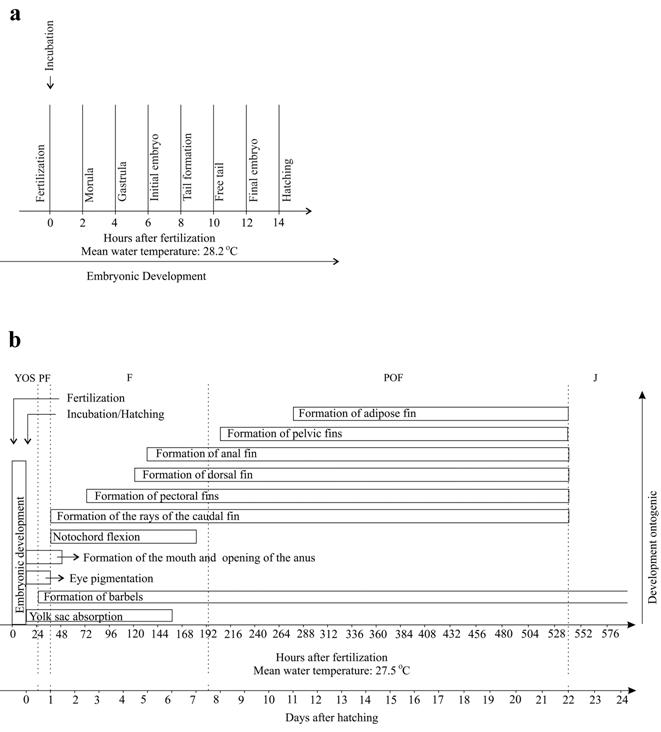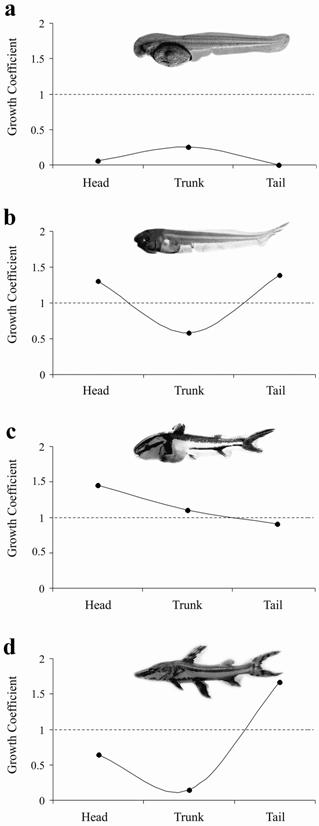ABSTRACT
This study described the initial development of Pseudoplatystoma reticulatum, as well as changes in growth patterns. Morphometric and meristic variables were analyzed during embryonic, larval and juvenile periods, even as allometric growth coefficients for larvae and juveniles. Eggs showed an average diameter of 1.79 mm and broad perivitelline space (23.41%). The total length (TL) of the larvae ranged from 3.05 to 25.72 mm, and the total number of myomeres ranged from 45 to 50 (preanal = 13-16 and postanal = 30-35). Initial pigmentation is poor, concentrated at the extremities of the yolk sac. In the flexion stage, the pigmentation intensifies and forms a longitudinal stripe extending from the snout to the operculum and two longitudinal stripes on the body, one dorsal and the other ventral, that unite at the caudal peduncle. At first, there is a differential growth of the head and tail, and then there is the growth of the body, which shows changes in the ontogenetic priorities of feeding, swimming, and breathing capacities. Our results are very important for ecology, systematics, and hatchering, especially in terms of ontogenetic variation in morphology, growth, feeding, behavior, and mortality of P. reticulatum.
Keywords:
Allometric growth; Early life stages; Fish larvae; Morphology; Ontogeny

 Thumbnail
Thumbnail
 Thumbnail
Thumbnail
 Thumbnail
Thumbnail
 Thumbnail
Thumbnail
 Thumbnail
Thumbnail
 Thumbnail
Thumbnail
 Thumbnail
Thumbnail






